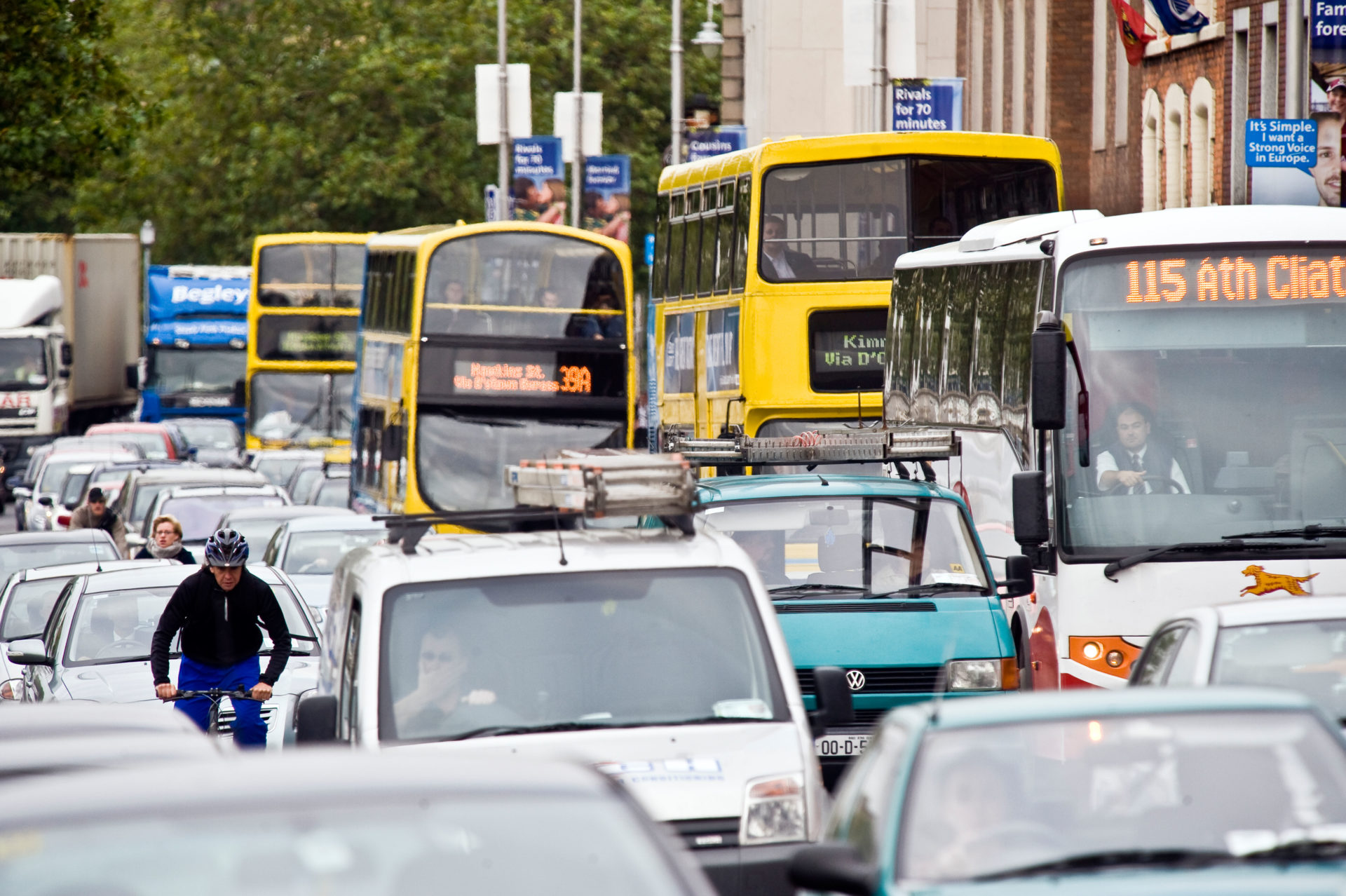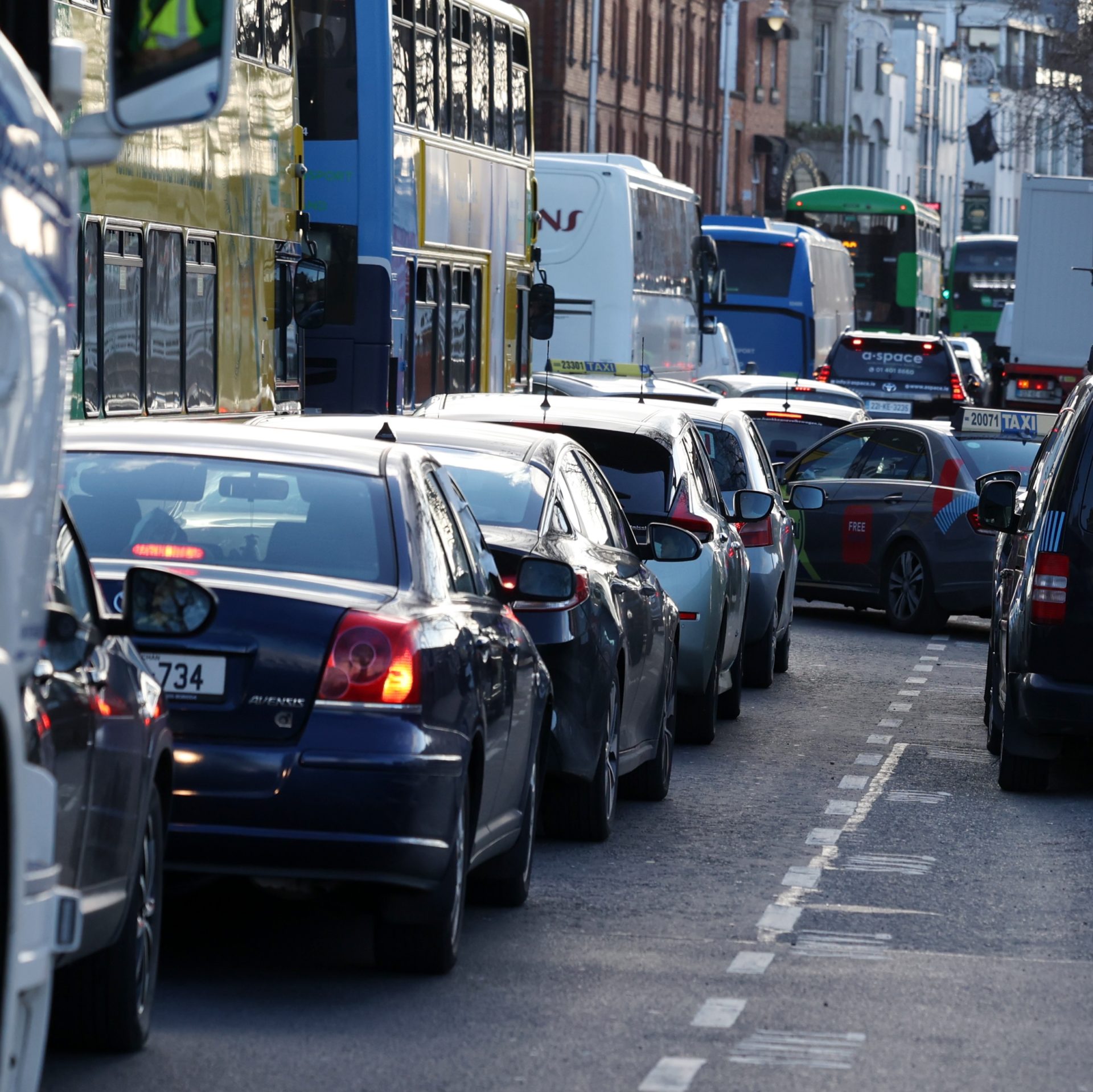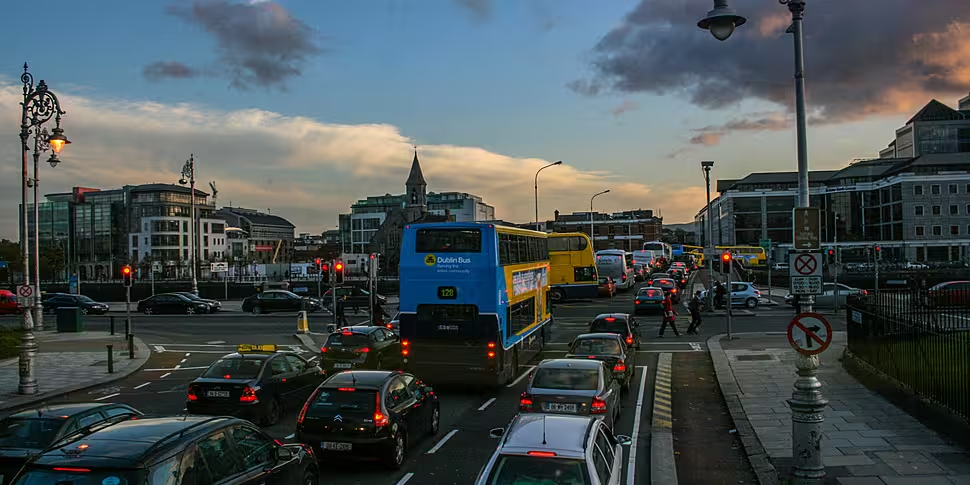A congestion charge is the “obvious solution” to the “intolerable” levels of traffic in Dublin city centre, a leading transport expert has said.
Congestion charges are common in cities where local authorities want to reduce the number of people who travel by car.
Speaking on Moncrieff, Christian Wolmar said urban areas have “far too many cars” in the city centre.
“The congestion charge is an obvious solution,” he said.
“The only thing that stops it is the timidity of politicians who fear that it’s going to cause chaos, that it will [encounter] a lot of opposition and that they’ll eventually lose their positions or seats as a result.”
 Heavy traffic on the Quays in Dublin. Credit: Douglas O'Connor / Alamy Stock Photo
Heavy traffic on the Quays in Dublin. Credit: Douglas O'Connor / Alamy Stock PhotoOpponents of congestion charges often cite poor public transport as a reason not to go ahead with them.
However, Mr Wolmar said such a mindset would mean indefinite delay to a worthwhile measure.
“This has to go hand in hand with improvements to the public transport system,” he said.
“But if you wait until you have the perfect public transport system… then you’re never going to take action.
“So, one of the obvious things to do is to have a congestion charge that helps to fund the buses and the Metro or whatever you can then build as a result of that.”
 Traffic delays on the South Quays in Dublin city centre in March 2023. Image: Sam Boal/Rollingnews.ie
Traffic delays on the South Quays in Dublin city centre in March 2023. Image: Sam Boal/Rollingnews.ieMr Wolmar said the last time he was in Dublin it was “certainly gridlocked” and action needs to be taken.
“This is intolerable,” he said.
“We shouldn’t be putting up with this; we have to devise a better system.
“Of course, some people have to get into the city centre but they’ll just have to pay a bit to do so.
“Just as they have to pay to park these days… So, why not charge people for what is basically a limited resource?”
London introduced a congestion charge in 2003 and Mr Wolmar said “really nobody notices it anymore”.
“The registration number is taken and they either pay or they get charged for it and, of course, it’s more expensive if they haven’t paid for it in advance.
“These days electronic systems are much more sophisticated than the one in London.
“So, there are lots of methods.”
Dublin City Council said ruled out a congestion charge last year.
Main image: A traffic jam during rush hour.









